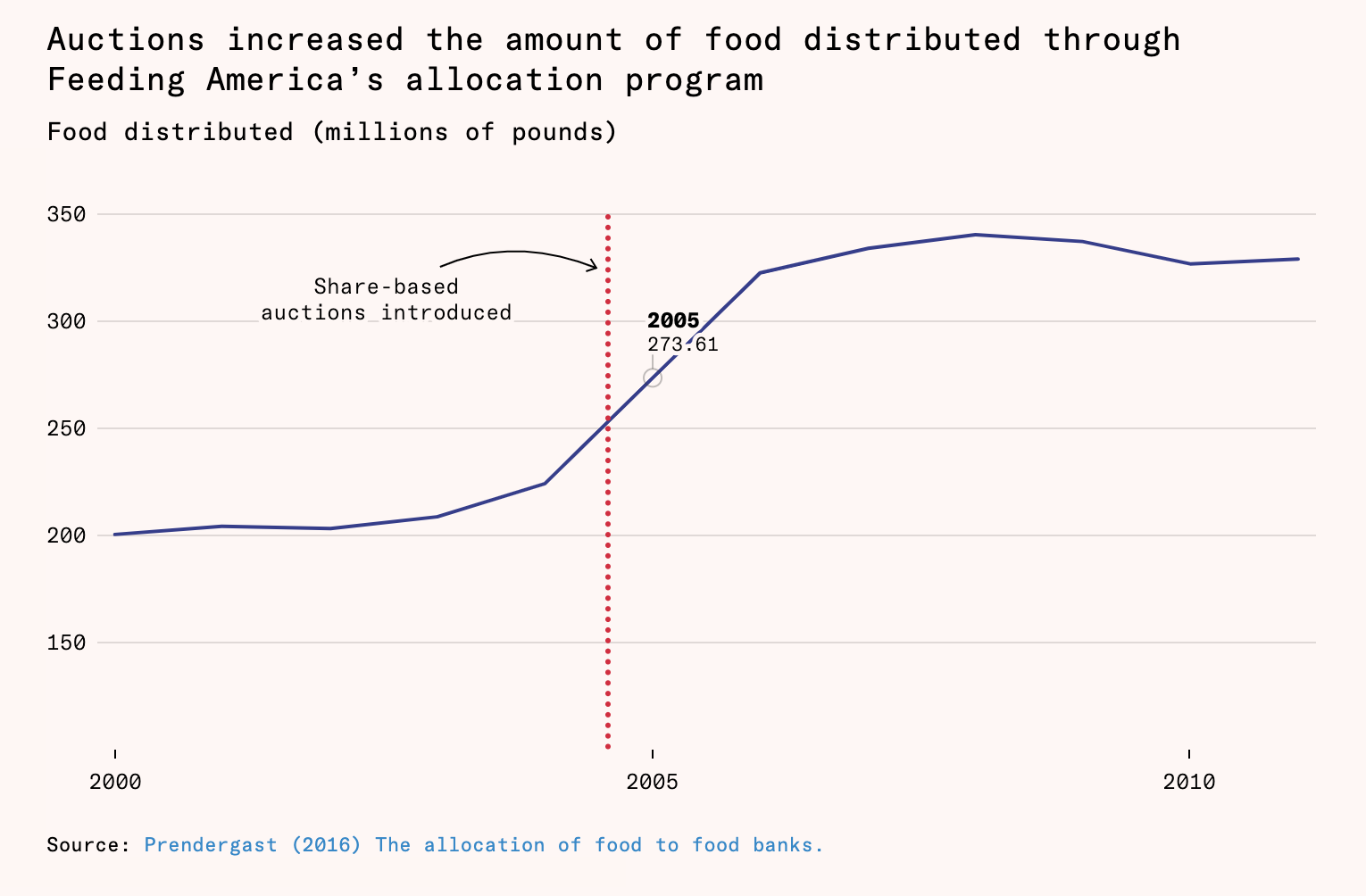For most of its history, Feeding America, the nation’s largest nonprofit, relied on a broken system to distribute its 220 million pounds of food per year. It ignored existing stocks and donations, flooding fully stocked food banks in Idaho with potatoes and warehouses in Alaska with five gallon buckets of pickles.
To fix how America fed its hungry would require the economics of market design. The new system increased food supply by 100 million pounds annually, equivalent to feeding an additional 60,000 people every day. It is one of the clearest successes of market design so far.
1

Footnotes
-
The Allocation of Food to Food Banks https://bfi.uchicago.edu/wp-content/uploads/11.1-Prendergast-food4-model.pdf ↩